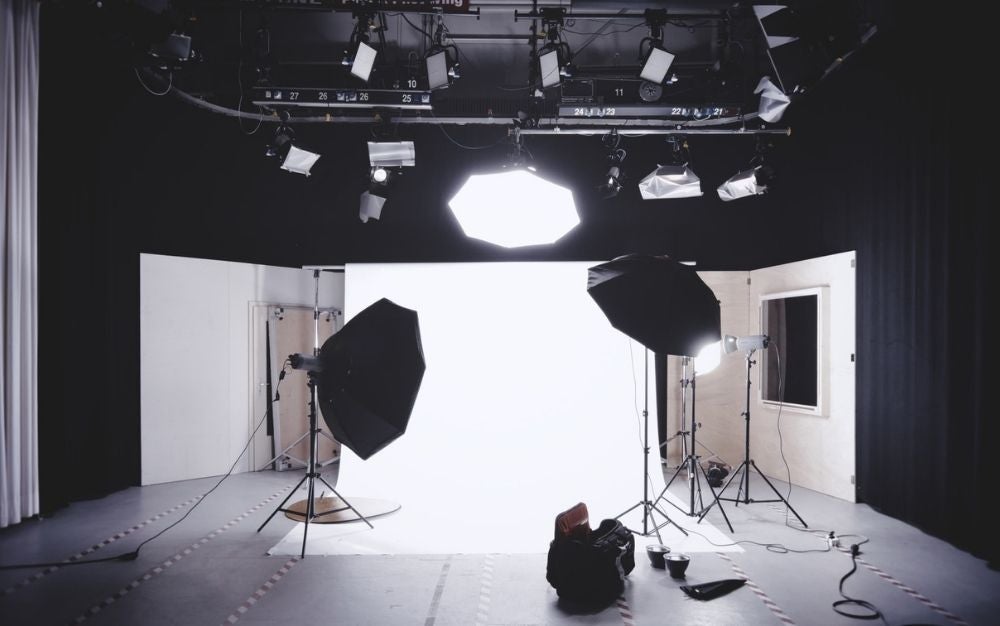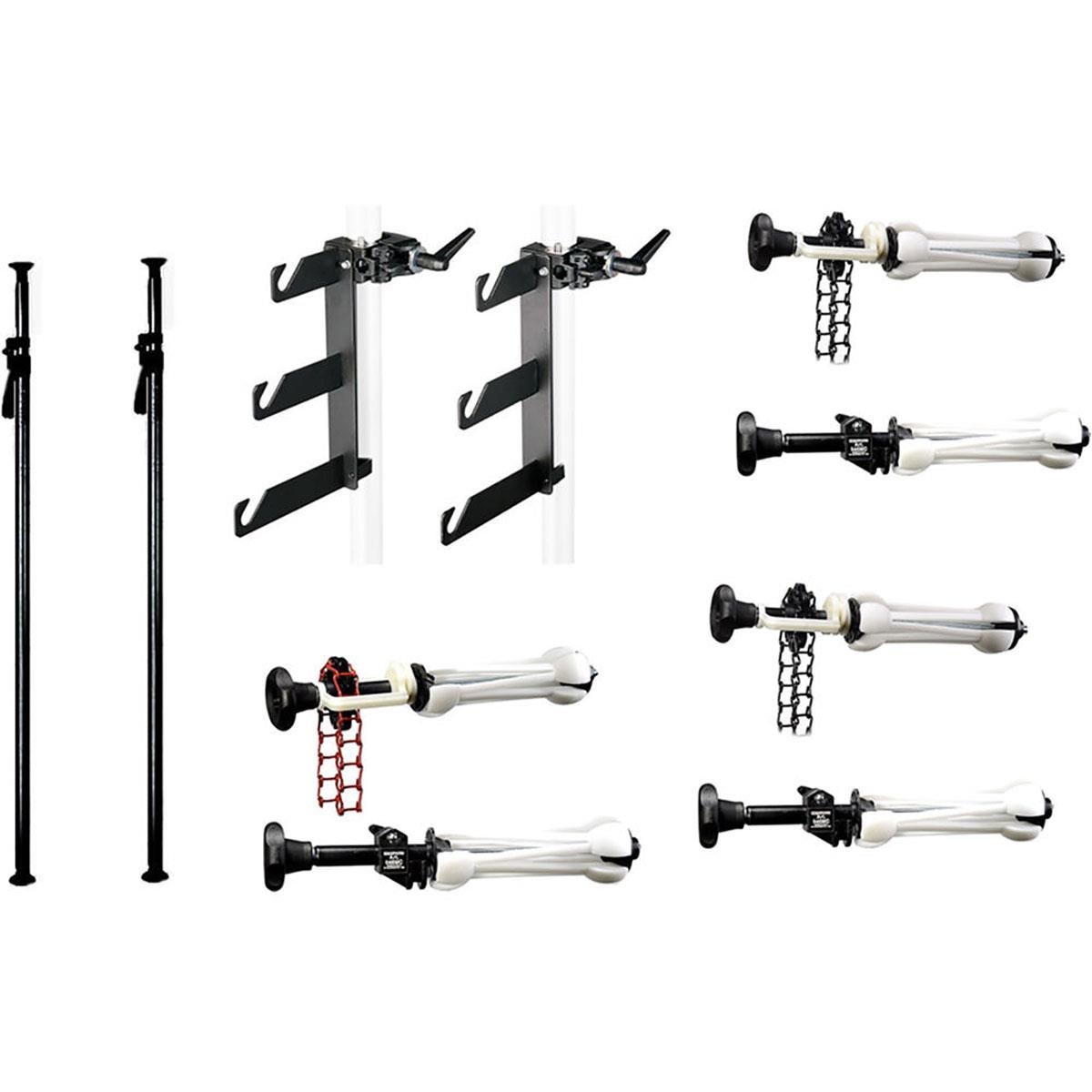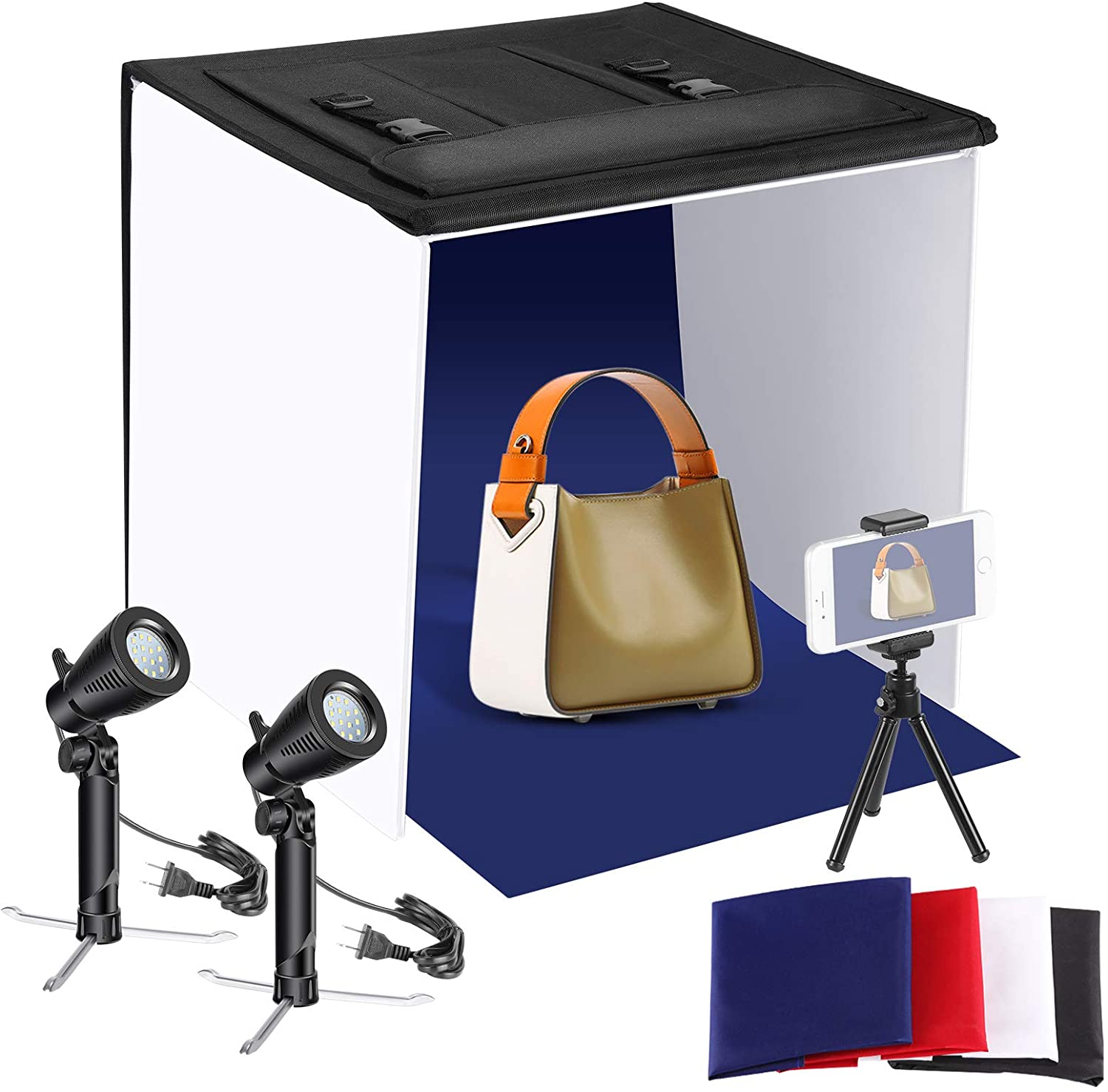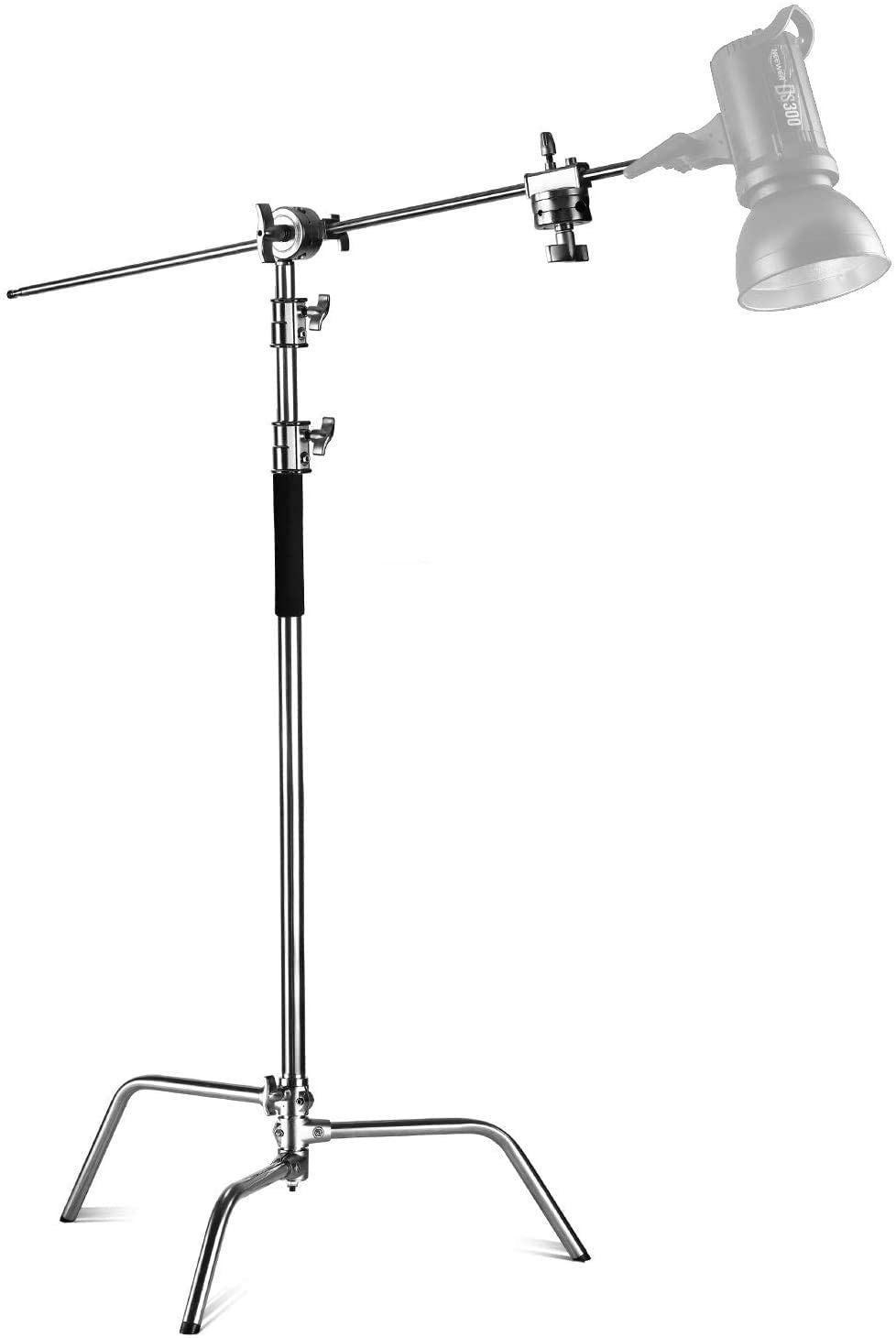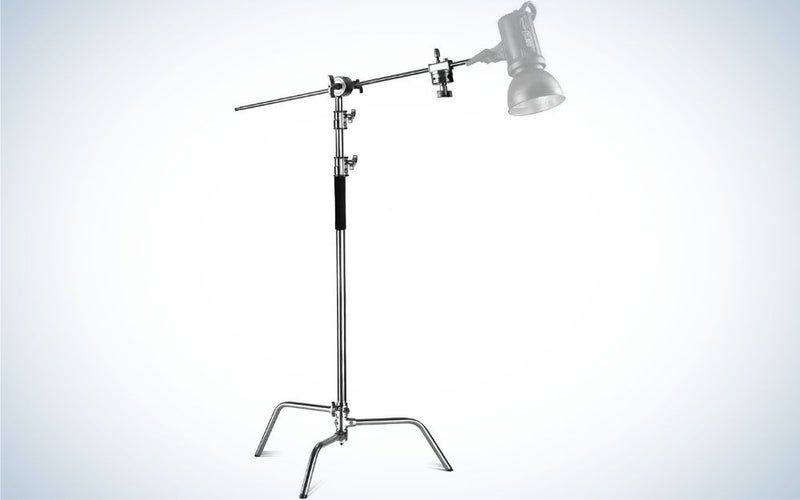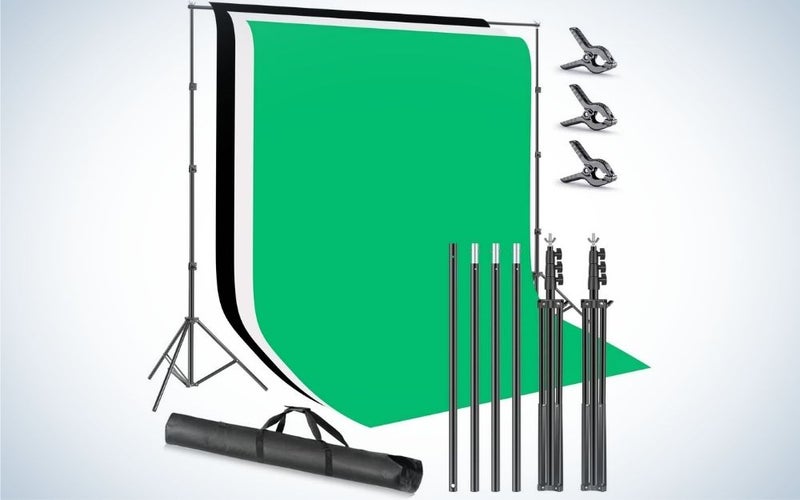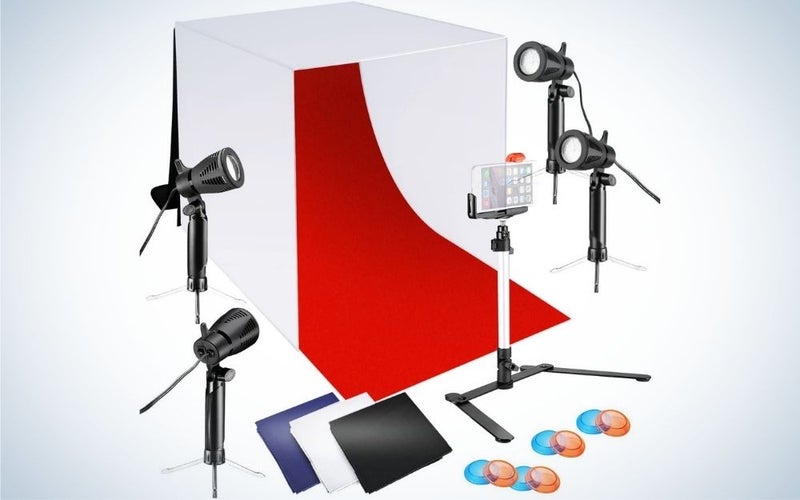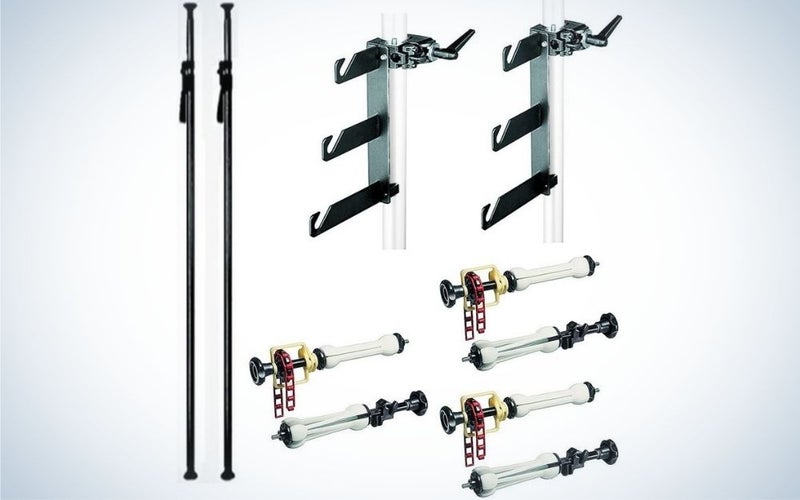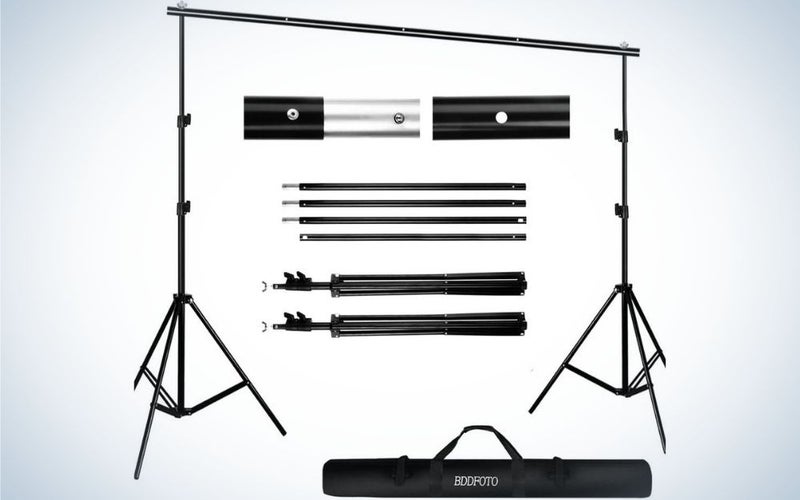We may earn revenue from the products available on this page and participate in affiliate programs. Learn more ›
A backdrop stand may not seem like the most exciting piece of photography equipment, but it’s the backbone of any studio. If you are looking to shoot pro portraits against seamless paper or easily hang a cloth backdrop, investing in the best backdrop stands you can afford will keep your shoots running smoothly.
Even if you’re not a studio shooter, you have a wide variety of backdrop stands from which to choose. They can handle everything from on-location portrait sessions to event coverage. Hanging your backdrop from a stand, rather than taping it to the wall, means that while you are shooting you don’t need to worry about the backdrop falling unexpectedly. Gaff tape is great, but it shouldn’t be holding up your backdrop.
- Best overall: Neewer Pro Stainless Steel Heavy Duty C Stand
- Best portable: Neewer Photo Studio
- Best for tabletop photography: Neewer 20×20 inches Tabletop Photography Lightbox
- Best heavy duty: Manfrotto 2961D Deluxe Autopole Expan Kit
- Best budget: BDDFOTO Photo Video Background Stand
The best backdrop stands: Reviews & Recommendations
Best overall Neewer Pro Stainless Steel Heavy Duty C Stand
Neewer
C Stands are a photo studio staple, and although they are typically used for holding lights, they are a great way to easily set up a backdrop as well. These stainless steel C Stands are durable enough to hold fresh rolls of seamless paper or heavier cloth backdrops, have a max height of 11ft. The turtle base makes it easy to flop a sandbag over the stand to keep it secure. You will need two of these to hang a full-sized roll of seamless, some clamps to secure it from the top once it’s rolled out, and gaff tape to secure the edge of the paper, but it’s a slightly more cost-effective than an autopole system, a lot more versatile. You can set it up solo or bring it on location if you leave ample time in the schedule and don’t mind a little lifting.
Best portable: Neewer Photo Studio
Neewer
Neewer’s backdrop stand kit comes with a carrying bag, backdrop clips, and three different colors of backdrops—making it a great affordable package for photographers who are just getting started. The stand is made of aluminum alloy and is adjustable up to 8.5ft tall and 9.8ft wide, the cross bar is made of 4 sections which makes it easy to adjust the width of the stand. We wouldn’t recommend putting a fresh roll of seamless paper on this backdrop stand, it’s better suited for lightweight fabrics, but it can handle a roll that’s near the end of its life. Luckily, this kit comes with three lightweight backdrops to get you started.
Best for tabletop photography: Neewer 20×20 inches Tabletop Photography Lightbox
Neewer
A compact setup for smartphone shooters looking to sell their wares online or the photographer shooting small products. This backdrop stand tabletop kit comes with four fabric backdrops, four mini LED lights, a set of gel filters, and a stand for your smartphone. The stand is actually a foldable lightbox that folds into a compact case, making this a great option for shooters who are crunched on space. This tiny setup obviously doesn’t make sense for shooting portraits, but if you are the kind of shooter that deals with lots of small products it’s an excellent, easy-to-use solution. You can finally start that eBay store selling knick knacks.
Best heavy duty: Manfrotto 2961D Deluxe Autopole Expan Kit
Manfrotto
Manfrotto is one of the most trusted brands in the photo space and the company’s Autopole system is an excellent choice for shooters who are primarily working in a studio. The autopoles securely wedge between the floor and the ceiling. They offer an expandable height of 6.5 feet to 11.4 feet—making it an excellent choice for a studio space.
Best budget: BDDFOTO Photo Video Background Stand
BDDFOTO
Don’t expect this budget backdrop stand to last a lifetime, but if you are looking for something lightweight, easy to use and your backdrops aren’t particularly heavy—you really can’t beat the price on this one. This backdrop stand is adjustable from 2.3ft to 6.6ft in height and has a 4 piece cross bar that can be set up between 5ft to 10ft. It can only hold up to 5.29 lbs of weight though, so this is a system that you will want to use with lightweight cloth or vinyl backdrops, rather than fresh rolls of seamless paper. It breaks down small for easy storage in its compact carrying case. Don’t forget the sandbags if you intend to shoot with this one.
Things to consider when looking at the best backdrop stands
Backdrop stands come in a variety of materials, sizes, and price points, and considering where you will be using the stand most often will help you consider what stand is best for you. If you are primarily working in a studio situation and have assistants working under you, you can’t beat the flexibility of an Autopole system. If you are a studio shooter who often works alone, investing in two solid C stands might be a better option.
If you are a photographer who regularly travels to weddings or events and is in need of a step-and-repeat or photo booth style set up, a collapsible backdrop stand that you build on site will probably serve your needs better. You’ll appreciate the portability when it’s time to pack up.
Pay close attention to what material your backdrop stands are made of though—a stand made of stainless steel or aluminum alloy will be stronger and more durable than a lighter weight model.
Other things to consider when shopping for a backdrop stand
As with many pieces of pro gear, the most expensive backdrop stand isn’t necessarily the best one for your specific needs. Full-sized backdrop stands can range anywhere from $30 to $500 dollars, but there is a significant range in quality that you will find online. The most expensive backdrop stands are a durable and excellent choice for studio shooting, especially if you are a photographer who regularly shoots with seamless paper. They are, however, often heavy and bulky, which makes them less than ideal for shooting on location.
If you are the kind of photographer who is typically shooting in the field, something collapsible may be a better option. Collapsible backdrop stands can be small enough for a single headshot or large enough to fit several people. They also come in a variety of color and pattern options. Although a lightweight option might seem like the go-to choice, if you are planning to hang heavy cloth backgrounds or heavy rolls of seamless paper from it, you will likely find yourself replacing it after only a few shoots. Many of the lightweight collapsible backdrop stands are really better suited for hanging a thin cloth backdrop or a vinyl step and repeat backdrop. You really don’t want your setup collapsing mid-shoot. It’s bad for the pictures and your insurance rates.
Regardless of the backdrop stand that you choose you will want to invest in some gaff tape, clamps and sand bags to keep your backdrop upright. Sandbags are particularly important if you are shooting outside with a collapsible backdrop stand to keep a strong gust of wind from taking your backdrop away from the set. An outdoor backdrop is basically a sail from a sailboat just waiting to take off with a gust of wind.
Gaff tape will help you secure your seamless paper to the ground, while clamps will keep the top of your paper from unraveling. Read on to learn more about some of our favorite options for hanging backdrops.
The Expan system holds up to three rolls of paper, and a gear drive chain on the side of the rolls allows shooters to easily roll and unroll seamless papers. The system has a max weight capacity of 22 lbs, although we wouldn’t recommend keeping your seamless papers hanging from the stand when not in use because they can form slight bends that show up in photos. If you are a busy studio shooter you can’t go wrong with this system.
FAQs
Q: How to choose a backdrop stand?
Choosing the right backdrop stand for you has a lot to do with where you will be shooting and what your budget is. Consider if you will be using the backdrop stand primarily in the studio or taking it out to locations and events. Heavy duty autopole systems will be more expensive and last longer than a collapsible backdrop stand, but they are also harder to travel with.
Q: What type of backdrop stand should I buy?
Before buying a backdrop stand consider what kind of backrdrops you will be hanging from it. If you are primarily shooting with seamless paper you will be better suited using an autopole system or some C-stands. If you are shooting with lightweight cloth backdrops or vinyl step and repeat banners a collapsible lightweight backdrop stand should be plenty.
Q: Which backdrop stand is the most durable?
Collapsible backdrop stands break down over time and will need to be replaced. If durability is what is most important to you, consider an autopole system. If budget is an issue, getting two stainless steel C stands and hanging your seamless paper from that is a great option, and an easier option for travel. C stands can last forever if you buy heavy duty models.
Final thoughts on the best backdrop stands
A backdrop stand is an excellent way for taking your studio or event photography to the next level. A solid backdrop stand will allow you to eliminate distracting elements from your background so that the focus is on your subjects. Don’t forget your roll of gaff tape, sandbags, and a set of clamps—three helpful photo accessories to make sure you can set your backdrops up with ease.
